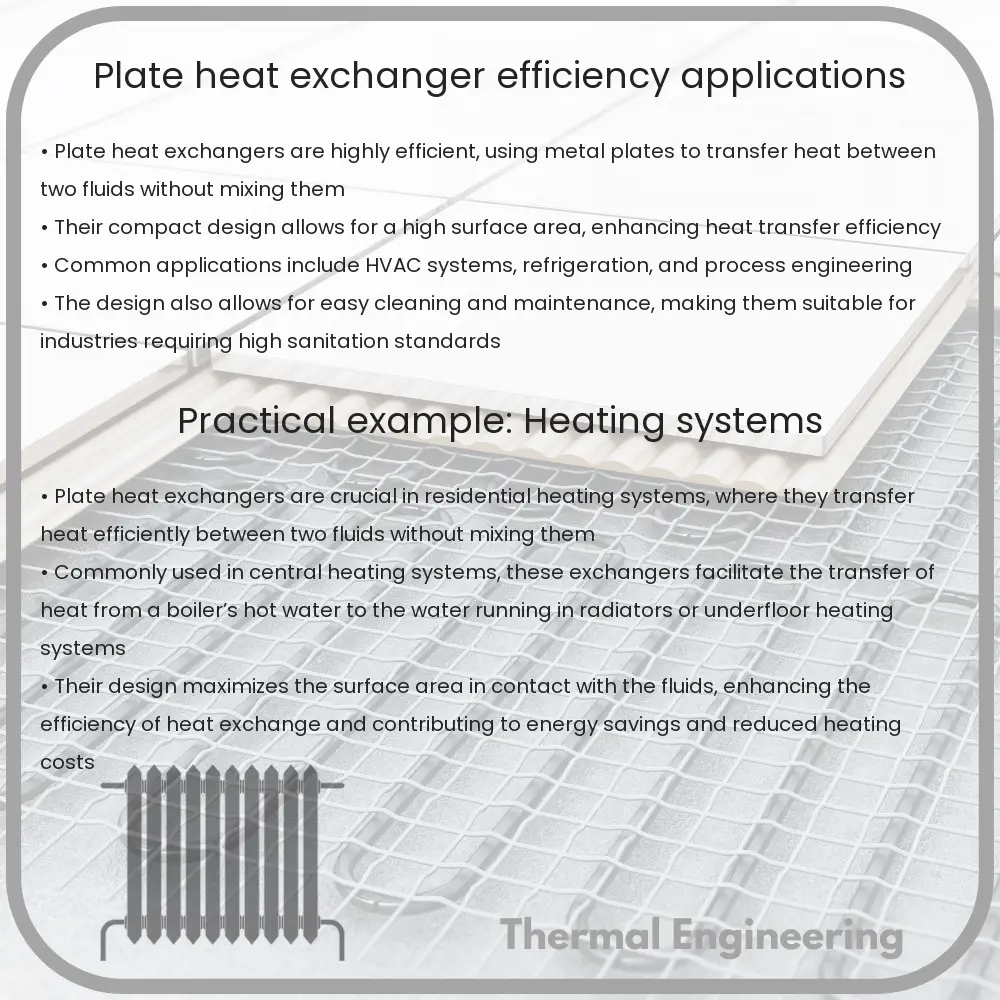Learn about plate heat exchangers, their operation, efficiency factors, and diverse applications in various industries.

Understanding Plate Heat Exchangers: Efficiency and Applications
A plate heat exchanger is a type of heat exchanger that uses metal plates to transfer heat between two fluids. This device is highly regarded for its efficiency and its ability to withstand large amounts of heat without a significant increase in size. Understanding the basic principles, efficiency factors, and applications of plate heat exchangers can provide valuable insight into this essential engineering component.
How a Plate Heat Exchanger Works
In a plate heat exchanger, fluid to be heated or cooled flows through alternating spaces between corrugated plates. The design maximizes the surface area of the plates, improving heat transfer while minimizing the space occupied. The corrugation of the plates also creates a turbulence in the fluids, which enhances the transfer of heat.
Key Factors Influencing Efficiency
- Surface Area: Larger surface areas provide more space for heat exchange, increasing efficiency. The corrugated plates in these exchangers effectively increase the surface area.
- Flow Configuration: The arrangement of incoming and outgoing fluids greatly affects performance. Counterflow, where fluids flow in opposite directions, is most efficient, as it can maintain a higher temperature gradient.
- Material: Plate heat exchangers typically use metals with high thermal conductivity, such as stainless steel or aluminum, allowing efficient heat transfer.
- Temperature and Pressure Ratings: These parameters determine the operating boundaries of the heat exchanger. Devices capable of withstanding higher pressures and temperatures typically exhibit better performance.
Applications of Plate Heat Exchangers
Plate heat exchangers are versatile and used in various industries due to their efficiency and compact nature:
- Chemical Industry: They are utilized for tasks like cooling, heating, or condensing chemical compounds in processes where contamination must be avoided.
- Food and Beverage: Used to heat or cool products gently while maintaining hygiene and preventing contamination.
- Power Generation: Plate heat exchangers improve thermal efficiency in power plants by recovering waste heat from exhaust gases.
- Marine Applications: Used in ships for engine cooling, oil cooling, and as a condenser in air-conditioning systems.
- HVAC Systems: They play a crucial role in district heating and cooling systems, providing efficient temperature control.
Conclusion
Plate heat exchangers represent a sophisticated design in heat transfer technology. Their ability to handle high pressure and temperature conditions efficiently and compactly makes them integral in industrial applications across the globe. As technology progresses, the expectations for more efficient and environmentally friendly heat exchange solutions grow, positioning plate heat exchangers as a crucial component in the engineering toolkit.
Whether it’s enhancing energy conservation in large industrial systems or ensuring the purity and safety of processed food, the role of plate heat exchangers continues to expand across industries, reflecting their unmatched efficiency and versatility.